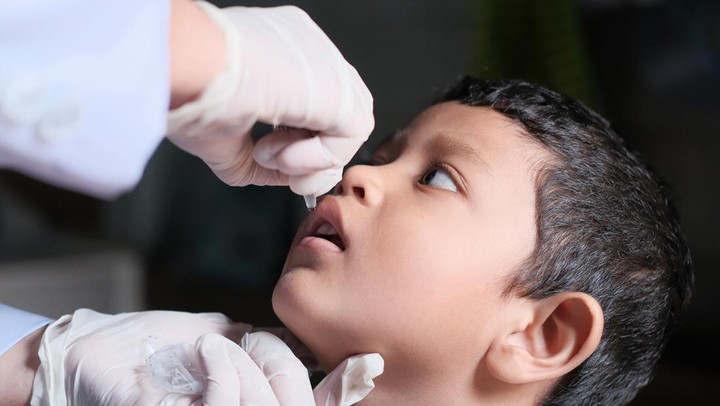
As the year drew to a close, headlines were dominated by a distressing event—an outbreak of polio in Klaten. The diagnosis of polio in a 6-year-old child in Manisrenggo, Klaten, near Sleman, Yogyakarta, sent shockwaves through the community.
“This news is akin to a nightmare on the eve of the new year, especially considering Yogyakarta’s historically good health status,” expressed Professor Mei Neni Sitaresmi, a pediatrician and distinguished professor in child health at the UGM Faculty of Medicine, Public Health, and Nursing, during a podcast by the UGM Center for Tropical Medicine, on Monday (Jan. 15).
Termed an Extraordinary Incident (KLB) in Indonesia, this outbreak is not merely a local concern but a global one. Potential foreign travelers may think twice about visiting the country due to the highly contagious nature of the disease. Polio transmission can occur through various ways, including food, fluids, and direct disposal of feces into rivers without proper containment.
Although Indonesia earned polio-free certification in 2014, the recent surge caught many off guard. Professor Sitaresmi highlights the potential complacency arising from the absence of wild polio cases, only to be jolted by the sudden outbreak.
“Polio is a disease caused by a virus called polio. There are three types of polio related to vaccines: polio 1, polio 2, and polio 3. It attacks through the digestive tract, enters the intestine, replicates, mostly without symptoms but transmissible,” she explained.
Reiterating the global implications, Professor Sitaresmi stresses the contagious aspect of the virus, emphasizing that even asymptomatic infected children could be carriers. The virus enters the digestive system through various means, such as hands, food, drinks, or utensils.
When one child is confirmed with polio, there could be 100 children around them who are infected but asymptomatic. Although they do not show symptoms, they can still transmit the polio virus to other children.
In cases where polio causes symptoms, children may experience fever, joint pain, headache, nausea, and vomiting. Primarily affecting children under five, it can extend to older children if their immunization history is incomplete.
“For adults, theoretically, it can happen. However, it is very rare because, in adults, immunity has been formed to fight the polio virus,” she added.
The graver consequences of polio, the pediatrician emphasized, involve paralysis. Paralysis caused by polio is irreversible, making physiotherapy the only recourse to mitigate its effects.
“In some cases, polio can also cause seizures, even death,” she warned.
Given the lack of a cure for polio, prevention becomes crucial. Professor Sitaresmi outlined comprehensive preventive measures, with vaccination topping the list to bolster children’s immune systems.
Improving nutritional status and adopting clean and healthy living practices are integral to creating an environment inhospitable to the polio virus transmission.
“The COVID-19 pandemic has taught us some positive habits, such as regularly wearing masks and washing hands. The community should preserve these behaviors,” she hoped.
In Health Minister Regulation No. 1501 of 2010, 17 specific infectious diseases can cause outbreaks. If one of these infectious diseases is found in an area where they did not exist before, the discovery can be the basis for declaring it an outbreak. Polio is one of them.
The outbreak declaration triggers a government response in the form of an outbreak response immunization (ORI) involving mass polio immunization for all vulnerable groups.
This Sub-National Immunization Week (Sub PIN) activity, spanning Central Java, East Java, and Sleman Regency for two rounds, aims to address the outbreak. The novel oral polio vaccine type 2 (nOPV2) will be administered during this initiative.
“We recommend that the targeted communities participate in this Sub PIN activity. However, routine vaccination must still be carried out according to the schedule as Sub PIN vaccination does not interfere with other routine vaccinations,” Professor Sitaresmi advised.
Author: Agung Nugroho
Photo: Hai Bunda

